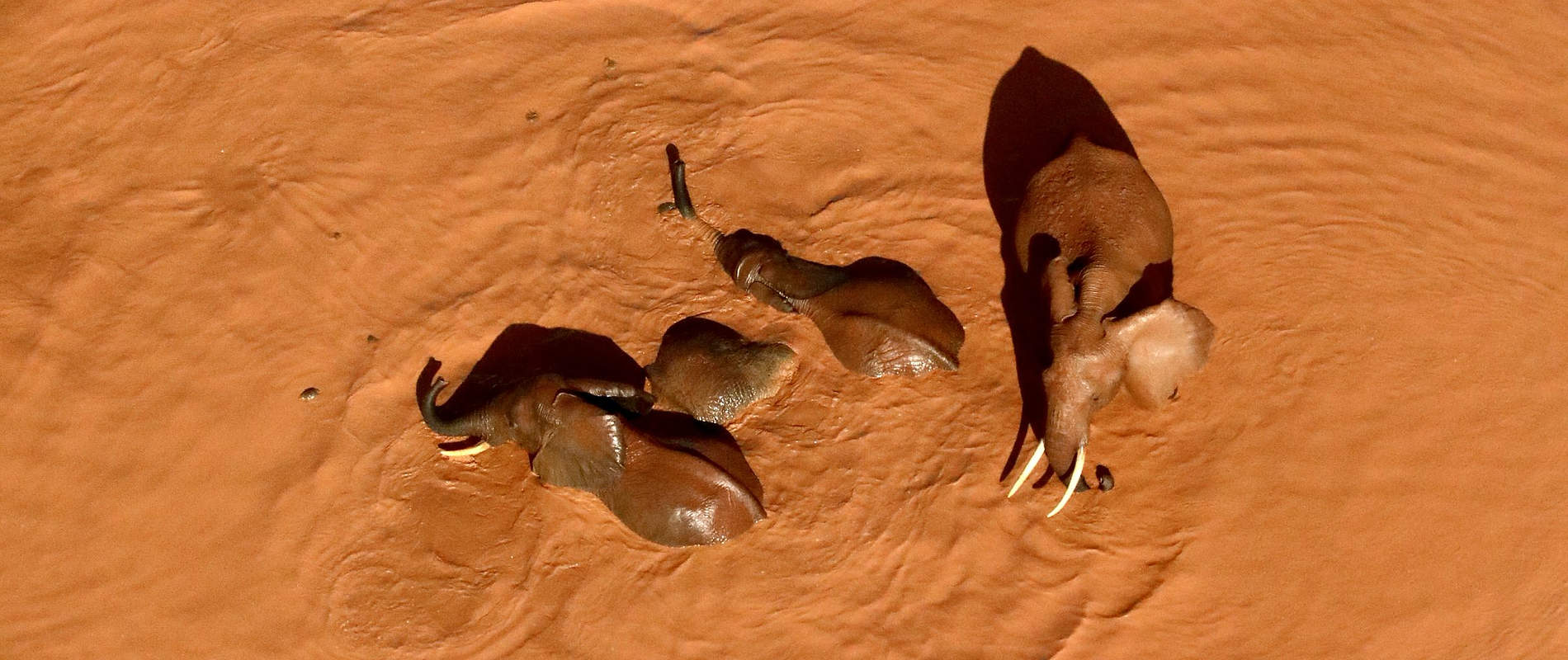In January, as the rains came to an end and the park began to dry out, several livestock incursions occurred in both Tsavo East and Tsavo West National Parks.
The largest of these occurred in the northeast corner of Tsavo East where a group of pastoralists, first discovered during a routine aerial patrol, claimed to be taking a shortcut across the corner of the park from South Kitui National Park to Kone. A week later, an even greater number of herders and livestock were found residing in the park in the same area: A total of 32 livestock enclosures were recorded inside the park on a single flight. Following this, a KWS ground operation was initiated in an attempt to remove the livestock and their herders from the park.

In Tsavo West — an area that is generally still under control — there were a few limited livestock incursions. These were identified during fixed wing aerial patrols and then acted on by ground teams, both from KWS and SWT. As grazing conditions worsen, it is expected that livestock pressure on the parks will increase. However, we can confidently report that the trend over the last few years has been positive across the entirety of the parks.

Surprisingly, the Aerial Unit only attended to two human-elephant conflict in January. A fixed-wing aircraft was called to check on a problem elephant in the community near Kanziku. One lone bull was found and plans were made to encourage him back into the protection of the park. In another instance, a community member was tragically killed by an elephant. The Aerial Unit was requested to help and the SWT helicopter flew to the scene. While it is impossible to confirm which elephant caused the fatal accident, four elephants were found in the vicinity and all were pushed back into the park.

After the rainy season’s respite, there was a sudden uptick in poaching activity observed in January, both during helicopter and fixed wing patrols. Most of the activity occurred near the Tiva River, where several injured elephants and giraffe carcasses were discovered during aerial and ground patrols. Follow-up patrols, again both by air and ground, discovered several poacher’s harbours and shooting platforms. Teams were deployed on major elephant paths to and from the river, which led to the discovery of additional poachers’ harbours, hides, and platforms. Separately, ground patrols in the area revealed two poached giraffe carcasses. A third giraffe was found injured with a broken leg and an aircraft was dispatched to find it; however, before arriving, the giraffe sadly succumbed to its injury.

Elsewhere in the park, a recent harbour was discovered with various paraphernalia including cookware and a cable snare, all of which were destroyed. Finally, a fixed-wing aircraft was called out to assist with the search for a poacher who had been spotted by a ground team on Galana Ranch and fled into the bush. Despite a thorough search, the suspect unfortunately made a successful escape.

As a direct result of this increase in poaching activity, the Aerial Unit was also busy assisting veterinary interventions for several elephants suffering from arrow wounds. An arrowed bull was initially seen by a ground team north of the Tiva River and then relocated by a fixed-wing aircraft so that it could be treated. Meanwhile, another fixed-wing aircraft was deployed to collect a KWS/SWT Amboseli Vet Unit, because the Tsavo Unit was unavailable. Once onsite, the vet was flown to the elephant’s location by helicopter where he successfully darted the bull and retrieved a poisoned arrow from the left shoulder. Due to the severity of the injury, the bull was given a guarded prognosis and will likely require a follow-up treatment in the future.

Two other bull elephants were found in a similar area, also with suspected arrow wounds. One was treated and given a good prognosis. The other’s injury was determined to not be life-threatening and the vet determined a treatment was not necessary

In January, aerial patrols also discovered a miraa harvesting camp atop the Chyulu Hills. The Aerial Unit landed and KWS rangers destroyed the camp. Illegal activities sighted outside of the parks on Kulalu Ranch and near the summit of Kilibasi Hill was charcoal burning. Of particular concern was a large-scale, commercial charcoal operation near the summit of Kilibasi Hill, which involved over 40 charcoal kilns.

A certain highlight of the month was the sighting of a 2–3-week-old rhino, born to one of the free-release rhinos in Tsavo East National Park. Every new rhino is a celebration and a testament to the incredible work that KWS has been doing protecting this fragile population, with aerial support from SWT. Another rhino-related highlight was the aerial sighting of one of the more remote rhinos in the park, who had gone unobserved for over three months.
